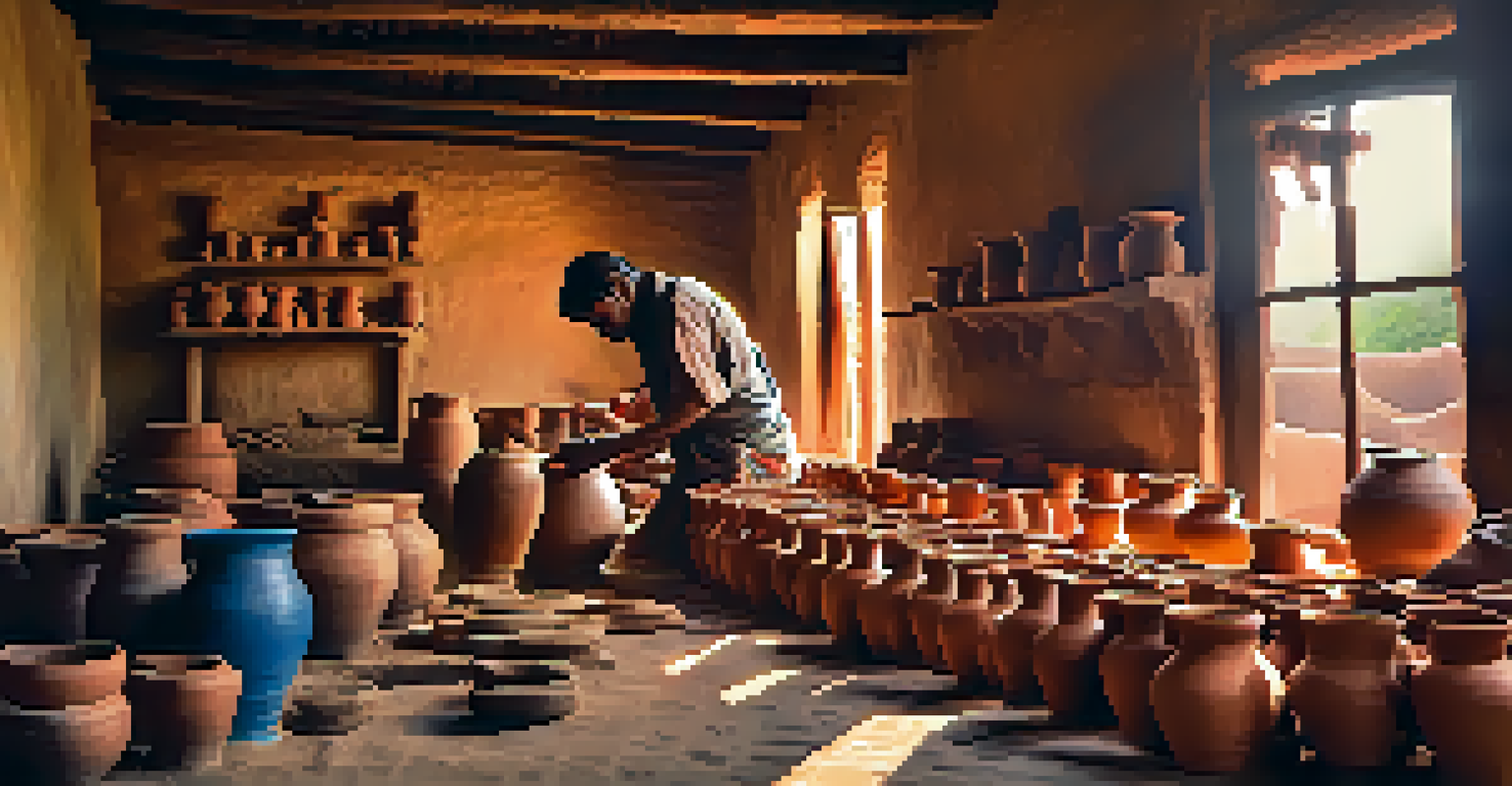Community Engagement in Preserving India’s Cultural Heritage

Understanding Cultural Heritage and Its Importance
Cultural heritage encompasses the traditions, languages, and artifacts that define a community's identity. In India, this rich tapestry includes everything from ancient temples to folk art and culinary traditions. By valuing and preserving these elements, we ensure that future generations understand their roots and history.
Cultural heritage is the legacy of physical artifacts and intangible attributes of a group or society inherited from past generations, maintained in the present and bestowed for the benefit of future generations.
Cultural heritage plays a pivotal role in shaping our values and social cohesion. It allows communities to connect with their past, fostering a sense of belonging and pride. For instance, festivals like Diwali or Holi not only celebrate cultural diversity but also unite people, reinforcing communal bonds.
Understanding the significance of cultural heritage is the first step in its preservation. When communities recognize their traditions as valuable assets, they are more likely to engage in efforts to protect and promote them. This collective responsibility is crucial for sustainable cultural preservation.
The Role of Community in Heritage Preservation
Communities are the custodians of their cultural heritage, playing a vital role in its preservation. Local traditions and practices often hold the key to understanding historical contexts that books alone cannot convey. This grassroots involvement ensures that preservation efforts are authentic and relevant.

For example, local artisans and craftsmen play an essential role in maintaining traditional arts and crafts. By passing down their skills to younger generations, they not only preserve these practices but also foster a sense of identity and pride within their community. This intergenerational transfer of knowledge is crucial for keeping traditions alive.
Cultural Heritage Shapes Identity
Cultural heritage encompasses traditions and artifacts that define community identity and foster a sense of belonging.
Engaged communities are more likely to advocate for their cultural heritage, whether through local initiatives or collaborations with governmental organizations. This active participation creates a dialogue that can lead to more effective preservation strategies that reflect the community's needs and aspirations.
Challenges Faced in Cultural Heritage Preservation
Despite the importance of community engagement, various challenges hinder effective cultural heritage preservation. Rapid urbanization, globalization, and socio-economic changes often threaten traditional practices and sites. As modern influences seep into daily life, there is a risk of diluting or losing cultural identities.
In a world where change is constant, preserving cultural heritage is essential not just for our own identity, but for the future of humanity.
Moreover, funding and resources for preservation efforts can be limited, particularly in rural areas. Many communities may lack access to training, materials, or even awareness about the importance of preservation. This can create a cycle where cultural practices fade away simply due to neglect or lack of support.
To address these challenges, it is essential to raise awareness and advocate for resources that support local initiatives. By empowering communities and providing them with the tools they need, we can combat the threats posed by modernity while ensuring cultural heritage thrives.
Successful Community Engagement Models in India
Numerous successful models of community engagement can be found across India, showcasing how grassroots efforts can lead to meaningful preservation. For instance, the 'Sankalp' project in Rajasthan encourages local communities to document and revive their folk traditions through workshops and performances. This participatory approach not only keeps traditions alive but also enhances community pride.
Another example is the 'Indian Heritage Cities Network', which promotes collaboration among cities to share best practices in heritage management. By facilitating exchanges and cooperation, cities can learn from each other's successes and challenges, creating a broader impact on cultural preservation nationwide.
Community Engagement is Key
Active involvement of local communities is crucial for the authentic preservation of cultural heritage and its practices.
These models highlight the importance of community involvement in creating sustainable solutions. They show that when people come together to celebrate and protect their heritage, they can make a significant difference in preserving their cultural identity.
Leveraging Technology for Cultural Preservation
In today's digital age, technology plays a crucial role in preserving cultural heritage. From virtual reality experiences that allow people to explore ancient sites to online platforms that document oral histories, technology can enhance community engagement. These tools can make heritage more accessible and relatable, especially for younger generations.
For example, mobile applications can facilitate the sharing of local stories, languages, and traditions, making it easier for communities to showcase their cultural assets. This not only promotes awareness but also encourages participation from a broader audience, helping to sustain interest in traditional practices.
However, it's essential to balance technology with authenticity. While digital tools can enhance preservation efforts, they should complement rather than replace traditional methods. By integrating both approaches, communities can create a richer, more vibrant heritage landscape.
Educational Initiatives to Foster Cultural Awareness
Education is a powerful tool in fostering cultural awareness and encouraging community engagement. Schools and local organizations can develop programs that highlight the importance of cultural heritage, teaching students about their history and traditions. This knowledge instills a sense of pride and responsibility for preserving their cultural identity.
Workshops, seminars, and cultural festivals can serve as platforms for sharing knowledge and skills related to heritage. Such initiatives not only educate participants but also bring communities together, fostering a collective commitment to cultural preservation. For instance, local cooking classes that teach traditional recipes can spark interest in culinary heritage.
Technology Enhances Preservation Efforts
Leveraging technology can make cultural heritage more accessible and engaging, particularly for younger generations.
Engaging younger generations through educational initiatives ensures that cultural heritage remains relevant. By nurturing an appreciation for their roots, communities can inspire future custodians who will carry on the legacy of their ancestors.
The Future of Community Engagement in Heritage Preservation
Looking ahead, the future of community engagement in preserving India's cultural heritage appears promising yet requires consistent effort. By continuing to prioritize local involvement, we can ensure that cultural practices are not only preserved but also adapted to changing times. This dynamic approach is essential for keeping traditions alive while making them relevant to contemporary society.
Moreover, fostering partnerships between communities, governments, and organizations can lead to more resourceful preservation strategies. By pooling knowledge, skills, and resources, stakeholders can create a stronger foundation for heritage protection that benefits everyone involved.

Ultimately, the sustainability of cultural heritage relies on a shared commitment to its preservation. When communities actively engage in this process, they contribute to a vibrant cultural landscape that honors the past while embracing the future.